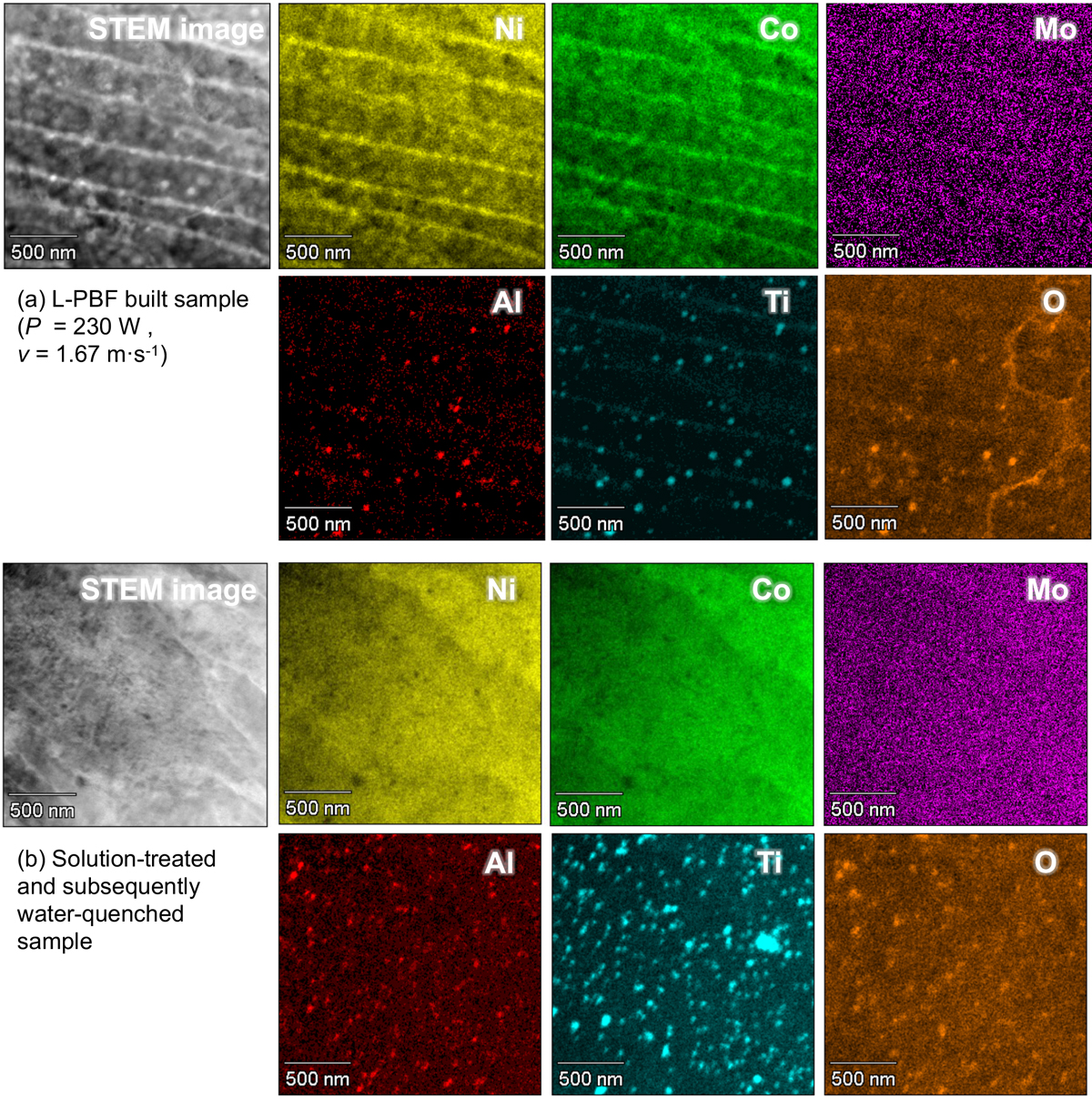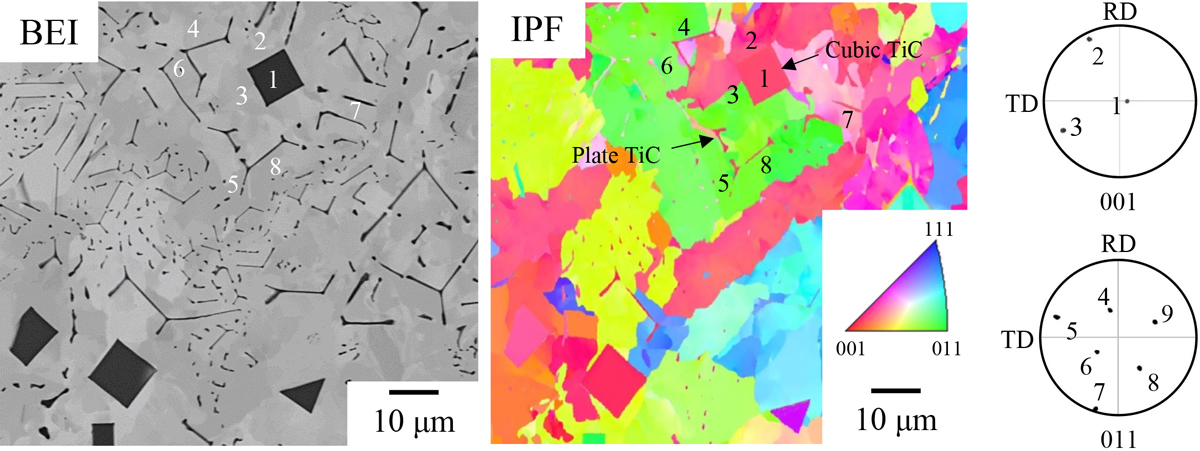
- Issue 16 Pages 2157-
- Issue 15 Pages 1805-
- Issue 14 Pages 1613-
- Issue 13 Pages S1141-
- Issue 12 Pages S1037-
- Issue 11 Pages 1443-
- Issue 10 Pages 1273-
- Issue 9 Pages 1077-
- Issue 8 Pages 917-
- Issue 7 Pages 751-
- Issue 6 Pages 585-
- Issue 5 Pages S389-
- Issue 4 Pages S1-
- Issue 3 Pages 403-
- Issue 2 Pages 233-
- Issue 1 Pages 19-
- Issue 16 Pages 2153-
- Issue 15 Pages 1977-
- Issue 14 Pages 1813-
- Issue 13 Pages S1285-
- Issue 12 Pages S1043-
- Issue 11 Pages 1667-
- Issue 10 Pages 1481-
- Issue 9 Pages 1231-
- Issue 8 Pages 891-
- Issue 7 Pages 711-
- Issue 6 Pages 538-
- Issue 5 Pages S407-
- Issue 4 Pages S1-
- Issue 3 Pages 347-
- Issue 2 Pages 173-
- Issue 1 Pages 14-
- Issue 16 Pages 1837-
- Issue 15 Pages 1711-
- Issue 14 Pages 1569-
- Issue 13 Pages S1205-
- Issue 12 Pages S1034-
- Issue 11 Pages 1423-
- Issue 10 Pages 1269-
- Issue 9 Pages 1059-
- Issue 8 Pages 925-
- Issue 7 Pages 775-
- Issue 6 Pages 627-
- Issue 5 Pages S287-
- Issue 4 Pages S1-
- Issue 3 Pages 301-
- Issue 2 Pages 147-
- Issue 1 Pages 12-
- Issue 16 Pages 2179-
- Issue 15 Pages 1795-
- Issue 14 Pages 1631-
- Issue 13 Pages S1053-
- Issue 12 Pages S1023-
- Issue 11 Pages 1501-
- Issue 10 Pages 1315-
- Issue 9 Pages 987-
- Issue 8 Pages 767-
- Issue 7 Pages 621-
- Issue 6 Pages 473-
- Issue 5 Pages S305-
- Issue 4 Pages S1-
- Issue 3 Pages 299-
- Issue 2 Pages 151-
- Issue 1 Pages 16-
- Issue 16 Pages 1945-
- Issue 15 Pages 1699-
- Issue 14 Pages 1531-
- Issue 13 Pages S1055-
- Issue 12 Pages S1013-
- Issue 11 Pages 1367-
- Issue 10 Pages 1215-
- Issue 9 Pages 1087-
- Issue 8 Pages 887-
- Issue 7 Pages 721-
- Issue 6 Pages 507-
- Issue 5 Pages S317-
- Issue 4 Pages S1-
- Issue 3 Pages 343-
- Issue 2 Pages 187-
- Issue 1 Pages 17-
- Issue 16 Pages 2405-
- Issue 15 Pages 2067-
- Issue 14 Pages 1865-
- Issue 13 Pages 1675-
- Issue 12 Pages S1055-
- Issue 11 Pages S1015-
- Issue 10 Pages 1479-
- Issue 9 Pages 1129-
- Issue 8 Pages 895-
- Issue 7 Pages 711-
- Issue 6 Pages 545-
- Issue 5 Pages S325-
- Issue 4 Pages S1-
- Issue 3 Pages 369-
- Issue 2 Pages 193-
- Issue 1 Pages 16-
- Issue 16 Pages 2573-
- Issue 15 Pages 2261-
- Issue 14 Pages 2073-
- Issue 13 Pages S1111-
- Issue 12 Pages S1001-
- Issue 11 Pages 1867-
- Issue 10 Pages 1657-
- Issue 9 Pages 1409-
- Issue 8 Pages 1043-
- Issue 7 Pages 841-
- Issue 6 Pages 649-
- Issue 5 Pages S415-
- Issue 4 Pages S1-
- Issue 3 Pages 431-
- Issue 2 Pages 225-
- Issue 1 Pages 3-
- |<
- <
- 1
- >
- >|
-
2023 Volume 109 Issue 3 Pages Cover-
Published: March 01, 2023
Released on J-STAGE: February 28, 2023
JOURNAL OPEN ACCESSDownload PDF (668K) -
2023 Volume 109 Issue 3 Pages Contents-
Published: March 01, 2023
Released on J-STAGE: February 28, 2023
JOURNAL OPEN ACCESSDownload PDF (3248K) -
2023 Volume 109 Issue 3 Pages Editorial-
Published: March 01, 2023
Released on J-STAGE: February 28, 2023
JOURNAL OPEN ACCESSDownload PDF (207K)
-
Masatoshi Mitsuhara, Hideharu NakashimaArticle type: Preface
2023 Volume 109 Issue 3 Pages 149
Published: 2023
Released on J-STAGE: February 28, 2023
JOURNAL OPEN ACCESS FULL-TEXT HTMLDownload PDF (271K) Full view HTML
-
Satoru KobayashiArticle type: Review
2023 Volume 109 Issue 3 Pages 150-157
Published: 2023
Released on J-STAGE: February 28, 2023
JOURNAL OPEN ACCESS FULL-TEXT HTMLGrain size dependence of secondary creep rate in pure metals and single-phase alloys and the mechanisms/models to interpret the dependence have been reviewed. Two types of the grain size dependence were reported, both of which show a negative dependence approximately below 100 μm. The model proposed by Garofalo in 1960s assumes that the density of dislocations generated at grain boundaries and sub-boundaries determines the secondary creep rate, which is not experimentally supported. Mclean’s model considers preferential subgrain growth near grain boundaries, which might be important in practical steels and alloys with sub-grains such as high Cr ferritic heat resistant steels. Grain boundary sliding (GBS) and its accommodation process in grain is considered as a source of the negative grain size dependence. A finite element modeling performed by Crossman and Ashby, which simulated a deformation process where GBS is accommodated by the power law creep process in the grain interior, indicates that the negative grain size dependence cannot be interpreted by the accommodation process. Based on substructure observation and internal stress measurements, Terada established a “core and mantle” model where the mantle region near grain boundary has no internal stress. This model reasonably interprets the negative grain size dependence.
 View full abstractDownload PDF (1350K) Full view HTML
View full abstractDownload PDF (1350K) Full view HTML
-
Tatsuya Tokunaga, Yuta Motomura, Hidenori Era, Toshihiro Tsuchiyama, K ...Article type: Regular Article
2023 Volume 109 Issue 3 Pages 158-166
Published: 2023
Released on J-STAGE: February 28, 2023
Advance online publication: September 15, 2022JOURNAL OPEN ACCESS FULL-TEXT HTMLTo clarify the effect of alloying elements (M) on the grain boundary segregation behavior of boron (B) and carbon (C) in α-iron, the grain boundary segregation of B, C and alloying elements was evaluated thermodynamically for the Fe–B–1.0 at.%M and the Fe–C–1.0 at.%M ternary systems (M: Al, Ti, V, Cr, Mn, Nb, Mo) using the parallel tangent law proposed by Hillert. In this calculation, the Gibbs energies of the liquid phase in the Fe–B–M and Fe–C–M ternary systems were applied to those of the grain boundaries. According to the calculated results, in the Fe–B–M ternary systems, co-segregation of Ti, V, Mn or Nb with B was predicted, while no co-segregation behavior was confirmed in the case of Al, Cr or Mo addition; in the Fe–C–M ternary systems, co-segregation of Ti, V, Nb or Mo with C was predicted, while no co-segregation behavior was confirmed in the case of Al, Cr or Mn addition. These co-segregation tendencies correspond well with the formation tendencies of metal borides or metal carbides. Although the present calculated results were based on the assumption that substitutional elements can diffuse sufficiently in addition to interstitial elements B and C, we proposed an equation for the parallel tangent law under paraequilibrium condition in which no partitioning of substitutional elements occurs.
 View full abstractDownload PDF (4314K) Full view HTML
View full abstractDownload PDF (4314K) Full view HTML -
Shigeto Yamasaki, Masatoshi Mitsuhara, Hideharu Nakashima, Kazuhiro Ki ...Article type: Regular Article
2023 Volume 109 Issue 3 Pages 167-178
Published: 2023
Released on J-STAGE: February 28, 2023
Advance online publication: August 18, 2022JOURNAL OPEN ACCESS FULL-TEXT HTMLThe creep deformation behavior and microstructure of a N-containing steel expected to exhibit high creep strength and excellent oxidation resistance were investigated. Even for steel with a high W content, it was possible to form a martensitic microstructure by adding a sufficient amount of N. Comparison of the microstructures of the N-containing steel and a C-containing steel confirmed that the two steels have the same crystal orientation relationship. The N-containing steel precipitated with the Laves phase as a strengthening phase displayed a higher creep strength than conventional steel under relatively high stress. However, the superiority of the creep strength of the N-containing steel relative to the conventional steel decreased under low stress. The stress exponent of the N-containing steel was different from those of the C-containing steel and the conventional steel. This deference considered to be ascribed to the difference of variation behavior of dislocation density during creep deformation.
 View full abstractDownload PDF (22449K) Full view HTML
View full abstractDownload PDF (22449K) Full view HTML -
Katsuhiro Sato, Kyohei Nomura, Yohei Sakakibara, Yoshiki Shioda, Norik ...Article type: Regular Article
2023 Volume 109 Issue 3 Pages 179-188
Published: 2023
Released on J-STAGE: February 28, 2023
JOURNAL OPEN ACCESS FULL-TEXT HTMLIn order to understand microstructural changes in 9Cr-1Mo-V-Nb weld metal after long term use, microstructure and precipitates distribution before and after aging at 1013 K were investigated. In the weld metal, regions with coarse or fine prior austenite grains were observed due to thermal cycle during welding. In the coarse grain region, precipitate particles inferred to M23C6 were densely located on grain boundaries, however, in the fine grain regions, they were sparsely observed not only on grain boundaries but also inside grains. Post weld heat treatment (1013 K/7.7 h) followed by aging (1013 K/100 h) led to ferrite grains formation in the fine grain region. EBSD analysis implied that dislocation density in ferrite grains was low. After the aging, mean diameter of particles became coarser and interparticle spacing became sparser in the fine grain region than in the coarse grain region. On the other hand, dislocation density calculated by hardness in martensite structure was almost no deference between these regions before and after the aging. Therefore, it was suggested that ferrite grains were formed because pinning energy by precipitate particles locally reduced in the fine grain region.
 View full abstractDownload PDF (4035K) Full view HTML
View full abstractDownload PDF (4035K) Full view HTML -
Masatoshi Mitsuhara, Koichi Kurino, Yasuhide Yano, Satoshi Ohtsuka, Ta ...Article type: Regular Article
2023 Volume 109 Issue 3 Pages 189-200
Published: 2023
Released on J-STAGE: February 28, 2023
Advance online publication: September 15, 2022JOURNAL OPEN ACCESS FULL-TEXT HTMLOxide Dispersion Strengthened (ODS) ferritic steel, a candidate material for fast reactor fuel cladding, has low thermal expansion, good thermal conductivity, and excellent resistance to irradiation damage and high temperature strength. The origin of the excellent high-temperature strength lies in the dispersion of fine oxides. In this study, creep tests at 700°C or 750°C, which are close to the operating temperatures of fast reactors, and high-temperature tensile tests at 900°C to 1350°C, which simulate accident conditions, were conducted on 9Cr ODS ferritic steels, M11 and MP23, and 12Cr ODS ferritic steel, F14, to confirm the growth behavior of oxides. In the M11 and F14 creep test samples, there was little oxide growth or decrease in number density from the initial state, indicating that dispersion strengthening by oxides was effective during deformation. After creep deformation of F14, the development of dislocation substructures such as dislocation walls and subgrain boundaries was hardly observed, and mobile dislocations were homogeneously distributed in the grains. The dislocation density increased with increasing stress during the creep test. In the high-temperature ring tensile tests of MP23 and F14, the strength of both steels decreased at higher temperatures. In MP23, elongation decreased with increasing test temperature from 900°C to 1100°C, but increased at 1200°C, decreased drastically at 1250°C, and increased again at 1300°C. In F14, elongation decreased with increasing temperature. It was inferred that the formation of the δ-ferrite phase was responsible for this complex change in mechanical properties of MP23 from 1200 to 1300°C.
 View full abstractDownload PDF (4025K) Full view HTML
View full abstractDownload PDF (4025K) Full view HTML -
Naoki Takata, Yuya Ito, Ryoya Nishida, Asuka Suzuki, Makoto Kobashi, M ...Article type: Regular Article
2023 Volume 109 Issue 3 Pages 201-214
Published: 2023
Released on J-STAGE: February 28, 2023
Advance online publication: August 23, 2022JOURNAL OPEN ACCESS FULL-TEXT HTMLThis study was set to fundamentally investigate the characteristics of austenite reversion occurring in maraging steels additive-manufactured by laser powder bed fusion (L-PBF). The maraging steel samples manufactured under different L-PBF process conditions (laser power P and scan speed v) were subjected to heat treatments at 550°C for various durations, compared with the results of the austenitized and water-quenched sample with fully martensite structure. The L-PBF manufactured samples exhibited the martensite structure (including localized austenite (γ) phases) containing submicron-sized cellular structures. Enriched alloy elements were detected along the cell boundaries, whereas such cellar structure was not found in the water-quenched sample. The localized alloy elements can be rationalized by the continuous variations in the γ-phase composition in solidification during the L-PBF process. The precipitation of nanoscale intermetallic phases and the following austenitic reversion occurred in all of the experimental samples. The L-PBF manufactured samples exhibited faster kinetics of the precipitation and austenite reversion than the water-quenched sample at elevated temperatures. The kinetics changed depending on the L-PBF process condition. The enriched Ni element (for stabilizing γ phase) localized at cell boundaries would play a role in the nucleation site for the formation of γ phase at 550°C, resulting in the enhanced austenite reversion in the L-PBF manufactured samples. The variation in the reaction kinetics depending on the L-PBF condition would be due to the varied thermal profiles of the manufactured samples by consecutive scanning laser irradiation operated under different P and v values.
 View full abstractDownload PDF (26301K) Full view HTML
View full abstractDownload PDF (26301K) Full view HTML -
Yoshiki Shioda, Noriko Saito, Kyohei Nomura, Keiji KubushiroArticle type: Regular Article
2023 Volume 109 Issue 3 Pages 215-223
Published: 2023
Released on J-STAGE: February 28, 2023
JOURNAL OPEN ACCESS FULL-TEXT HTMLMetallurgical factor causing the heat-to-heat variation in creep rupture strength have been investigated for KA-SUS304J1HTB. In the long-term, there was a maximum difference of 3.5 times in creep rupture time between the heat with low creep strength and the heat with high creep strength. In the heat with low creep rupture strength, most of the creep voids occurred at the matrix/σ phase interface. Moreover, in the heat with low creep rupture strength, the area fraction of σ phase was larger than in the heat with high creep rupture strength. Considering that the difference in the area fraction of σ phase in each heat is related to the difference in phase stability of the austenite phase, the Md value in each heat was evaluated. The Md value is the parameter correlated with phase stability. The creep rupture time of each heat was correlated with the Md value. The smaller the Md value, the longer the creep rupture time. Therefore, the heat-to-heat variation in creep rupture strength is caused by the difference in the phase stability of each heat. In other words, in the heats with low phase stability, creep rupture strength is low because a large amount of σ phase precipitates during the creep test.
 View full abstractDownload PDF (5623K) Full view HTML
View full abstractDownload PDF (5623K) Full view HTML -
Shuntaro Ida, Kengo Watanabe, Kyosuke YoshimiArticle type: Regular Article
2023 Volume 109 Issue 3 Pages 224-233
Published: 2023
Released on J-STAGE: February 28, 2023
JOURNAL OPEN ACCESS FULL-TEXT HTMLThe microstructure of the B1-type TiC formed during solidification and its mechanical properties were investigated using arc-melted Fe-Ti-C ternary alloys. The TiC formed at relatively high temperatures in the liquid as the primary phase exhibited a dendritic shape. With decreasing temperature and/or decreasing Ti and C content in the liquid, its morphology changed to a cubic shape with the {001}TiC habit plane, a plate shape with the {011}TiC habit plane, and a needle shape with the <001>TiC preferential growth direction. The morphology of the TiC was characterized by the anisotropy of its surface energy and its growth rate. The cubic shape with the {001}TiC habit plane was formed as a result of the minimum surface energy of the {001}TiC. However, the plate shape with the {011}TiC habit plane and the needle shape with the <001>TiC preferential growth direction should be formed due to the slowest growth rate of <011>TiC and the fastest growth rate of <001>TiC, respectively. At room temperature, alloy with the dendritic TiC was fractured in the elastic deformation region because the TiC exhibited no plastic deformation. On the other hand, at 800ºC, it was suggested that the TiC has plastic deformability and alloy with the dendritic TiC was also plastically deformed.
 View full abstractDownload PDF (7306K) Full view HTML
View full abstractDownload PDF (7306K) Full view HTML
- |<
- <
- 1
- >
- >|